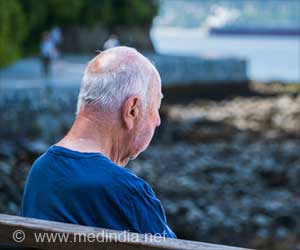Daytime dozing could be a precursor for stroke in elderly
Heavy daytime dozing could be a precursor for stroke in elderly, US researchers say.
The odds of having a stroke were nearly five times greater among heavy dozers, and nearly three times greater among occasional dozers, compared with people who rarely nodded off. The chances of other vessel-related problems were higher, too.Higher stroke risk was also seen in women with artery buildups accidentally revealed by mammograms and in non-diabetics starting to have insulin problems.
Columbia University researchers led by Bernadette Boden-Albala found that a simple scoring system to evaluate daytime dozing strongly predicted stroke risk. They asked 2,100 people, average age 73, how often they nodded off during specific situations during the day — watching TV, reading, sitting and talking to someone, sitting in traffic, or sitting quietly after lunch.
In the next two years, 40 had strokes and 127 had other blood vessel-related problems such as heart attacks or blood clots in the lungs.
Unintentional dozing is different from purposely taking a nap, although "we need to look at that" to see if regular siestas also are a sign of poor nighttime sleep, Boden-Albala said.
Frequent dozers should talk with their doctors about being evaluated for a sleep disorder. Possible solutions include a device that helps maintain continuous air pressure, losing weight if they are overweight, and even surgery if the airway is obstructed.
Advertisement
"Every time I see one I think, 'That woman has a breast full of calcifications. I wonder if her heart looks the same,'" said Dale, a cancer surgeon.
Advertisement
Next, they looked at the mammograms of 204 stroke patients and found the deposits in 56 percent of them — five times more often. Greater stroke risk was seen in women of all ages with the deposits, but especially among those in their forties and fifties.
"We're not saying just because you have these you're going to have a stroke — it's just identifying women at risk," Dale said.
He is starting a new study to see whether calcium deposits can be used to predict who will suffer strokes later, and thinks radiologists should report deposits to doctors so follow-up tests can be considered for stroke and heart disease.
Radiologists usually do not report artery deposits, which are more common as women age, said Dr. Carol H. Lee, an American College of Radiology spokeswoman from Memorial Sloan-Kettering Cancer Center in New York.
"I don't know that many radiologists emphasize it, especially in older people," she said.
"It may be a simple marker" for the risk of a lot of things, said Dr. Ralph Sacco, neurology chief at the University of Miami Miller School of Medicine.
The third study looked at clues of stroke risk from a different test — HOMA, a ratio of blood-sugar and insulin levels measured after fasting. High scores signal insulin resistance, a condition where the body is not able to effectively use that hormone to turn food into energy, raising the risk of diabetes.
Dr. Tatjana Rundek at the University of Miami led a study of 1,735 non-diabetic people, average age 68, participating in a long-running study of stroke risk in New York, funded by the federal government.
One-fourth had high HOMA scores, and in the next seven years, they had twice the risk of stroke compared to those with low scores.
The test isn't routinely done, but blood-sugar levels are frequently tested and may give a warning of more than diabetes risk, doctors said.
"You're getting information in two important areas," but people often focus on just the cancer risk, said Dr. Philip Gorelick, neurology chief at the University of Illinois in Chicago. He is chairman of the International Stroke Conference, a medical meeting in New Orleans where the studies were presented Thursday.
Source-Medindia
GPL/L











